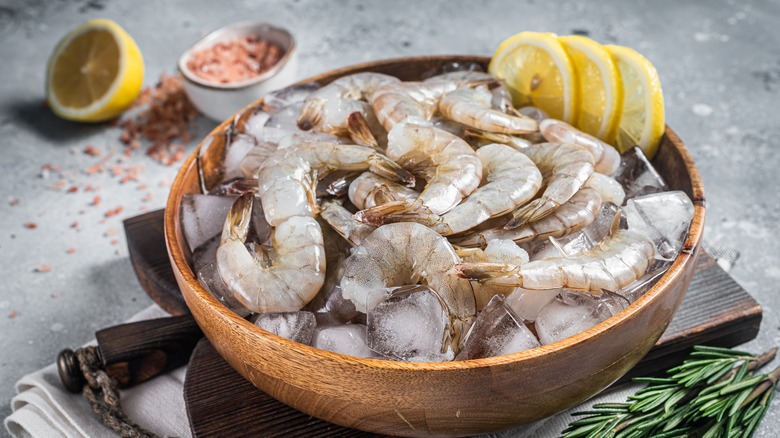Hey there! I’ve cooked thousands of shrimp over the years, and the tail-on vs. tail-off debate is something that comes up all the time in my kitchen. Let me break down everything you need to know about handling those pesky shrimp tails.
The Quick Answer
It depends on how you’re serving the shrimp! Here’s my simple rule
- Remove tails: For dishes where shrimp is mixed into sauces, pasta, or needs a fork and knife
- Keep tails: For appetizers and finger foods where the tail acts as a handle
When to Remove Shrimp Tails
Take those tails off when making:
- Shrimp scampi
- Stir-fries
- Pasta dishes
- Rice dishes
- Salads
- Soups and stews
- Casseroles
Trust me nobody wants to be fishing out tails from their fettuccine alfredo!
When to Keep Shrimp Tails
Leave those tails on for
- Shrimp cocktail
- Grilled shrimp skewers
- Fried shrimp
- Seafood platters
- Party appetizers
How to Remove Shrimp Tails
Here are my favorite methods that I use in my kitchen:
1. The Twist Method
- Hold shrimp body firmly in one hand
- Grab tail with other hand
- Twist and pull – it should pop right off!
2. The Pinch Method
- Hold shrimp body steady
- Pinch tail between thumb and finger
- Pull away from body quickly
3. Kitchen Shears Method (My Personal Fave!)
- Line up shrimp on cutting board
- Hold shears at downward angle
- Snip where tail meets body
- Super quick and clean!
Pro Tips from My Kitchen
- Remove tails just before cooking – keeps shrimp fresher longer
- Save those tails! They make amazing seafood stock
- If you’re feeling lazy, buy pre-tailed shrimp (no judgment here!)
- For frozen shrimp, thaw first – makes tail removal way easier
Don’t Throw Away Those Tails!
Here’s what I do with my shrimp tails:
- Collect them in a freezer bag
- Once I have enough, make seafood stock:
- Add tails to pot with water
- Throw in some onion, celery, garlic
- Simmer 30 mins
- Strain and freeze
This stock makes the BEST risotto and seafood soups!
Storage After Tail Removal
Keep your prepped shrimp fresh:
- Use within 1-2 days if refrigerated
- Keep on ice while prepping
- Can freeze for 3-6 months
- Always thaw in fridge overnight
The Expert Take
Even celebrity chef Ina Garten weighs in on this debate! She follows the same rule I do – it’s all about how you’re serving them. Finger food = tails on. Fork and knife dish = tails off.
Common Questions I Get
Q: Can I eat the tail?
A: Technically yes, but they’re pretty tough and fibrous. Not super tasty!
Q: Will removing tails affect cooking time?
A: Nope! Cook them exactly the same way.
Q: What about frozen shrimp?
A: Same rules apply – just thaw first for easier tail removal.
The Bottom Line
Look, there’s no absolute right or wrong here – it really depends on your dish. But follow my simple guideline (finger food = tails on, everything else = tails off), and you’ll be golden!
Remember, cooking should be fun and not too fussy. Don’t stress too much about those tails – just do what makes sense for your dish and makes eating easier for your guests.
Would ya like me to break down any of these methods in more detail? Drop a comment below and I’ll help you out! Happy cooking!

The anatomy of a shrimp impacts how it cooks

When cooking protein, its important to work with an ingredient that is uniformly shaped. This is why cooks tie up roasts or pound chicken breasts into cutlets. Shrimp are always unevenly shaped. The top of a piece of shrimp (the part just below the head) is its thickest point. As you travel down to the bottom, the shrimp gets steadily thinner. This means that the bottom part will naturally overcook before the top part is finished cooking.
The solution to this is simple; all you need to do is leave the shrimps tail on. The tail will insulate this thin area and prevent the meat from overcooking. Because this area is protected by the shell, it takes longer to cook. This creates the effect of a more uniformly thick piece of shrimp.
Leaving the tail on also has aesthetic purposes. The tail anchors the shrimp and stops it from deforming. If you are sauteing shrimp, this is especially important. Without the tail, a piece of shrimp will curl up when it hits a hot pan. This leads to a final dish that looks less appetizing and uniform.
